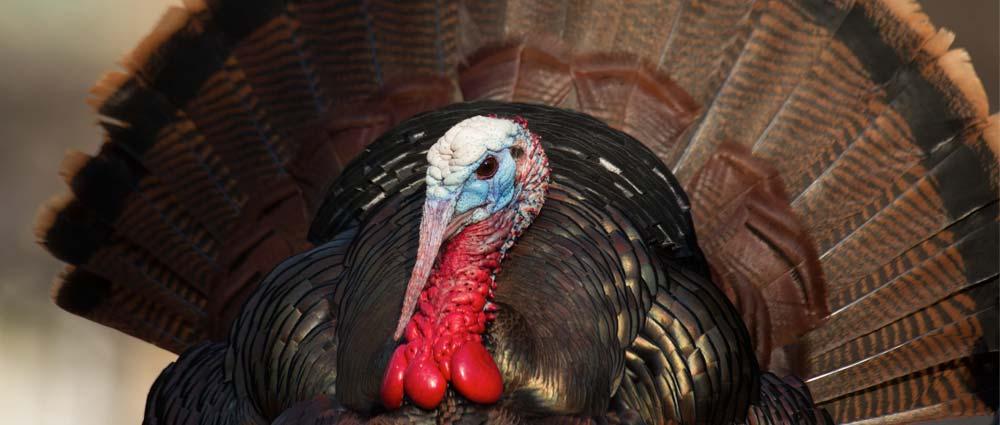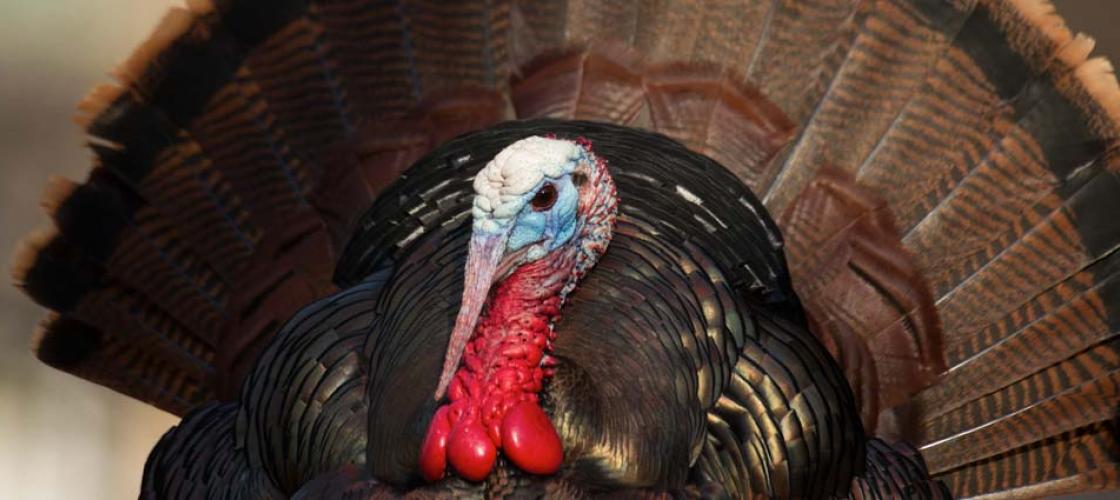Chances are, a turkey will land on your table this week, a bird simmered in American tradition.
The turkey was once so common in America and so well liked that it was considered for our national emblem, along with the bald eagle.
Turkeys are large and powerful, standing three feet tall when alert. They have bare necks covered with red and blue, bumpy skin. Long legs, broad wings and tail make them swift runners, as well as quick flyers for short distances. Their feathers are large, mostly brown, barred with black. Body feathers reflect shades of bronze, green, gold, and blue--beautiful colors that help turkeys blend into wooded areas.
Turkeys were domesticated by Native Americans and brought to Europe in the sixteenth century. Taken from Mexico by the Spanish conquistadors, turkeys later returned as domesticated birds with the English settlers. The wild turkey almost disappeared from our continent due to excessive hunting and loss of forest habitat. Today, thanks to restoration efforts, the wild turkey has been restored in many areas.
So, whether you place a wild or domestic turkey on your thanksgiving table, you’ll be sharing a piece of our American heritage. Happy Thanksgiving Missouri!
See how wild turkeys were restored in Missouri and watch some tasty ways to prepare your wild turkey in the videos below.
FUN FACTS: Wild turkeys have more than 5,00 feathers, are swift runners, and quick flyers for short distances.
Wild Turkeys
- A popular gamebird, the wild turkey is found in mixed forests and grasslands statewide.
- In spring, male turkeys (toms) begin gobbling to announce themselves to males and to attract females. Males perform elaborate strutting displays for females, spreading their tails like a peacock and puffing out their feathers. After mating, females care for the young alone, creating shallow nests on the ground.
- In the 1950s, populations in the state were at an all-time low of fewer than 2,500 birds in 31 counties; in 2004, hunters checked nearly 61,000 turkeys. Successful management focuses on proper seasonal combinations of food, cover, and water.
- Many animals feed on the eggs and young of wild turkeys, and several predators feed on adults as well as young. The turkeys, in turn, are steady grazers on seeds, nuts, insects, and other foods.
For more on wild turkeys, visit our Field Guide.


Recent Posts
























